Published Jun 30, 2022
8 Reasons to Close Out Pride Month with a ‘Deep Space Nine’ Rewatch
This show broke all the (gendered and heteronormative) rules.
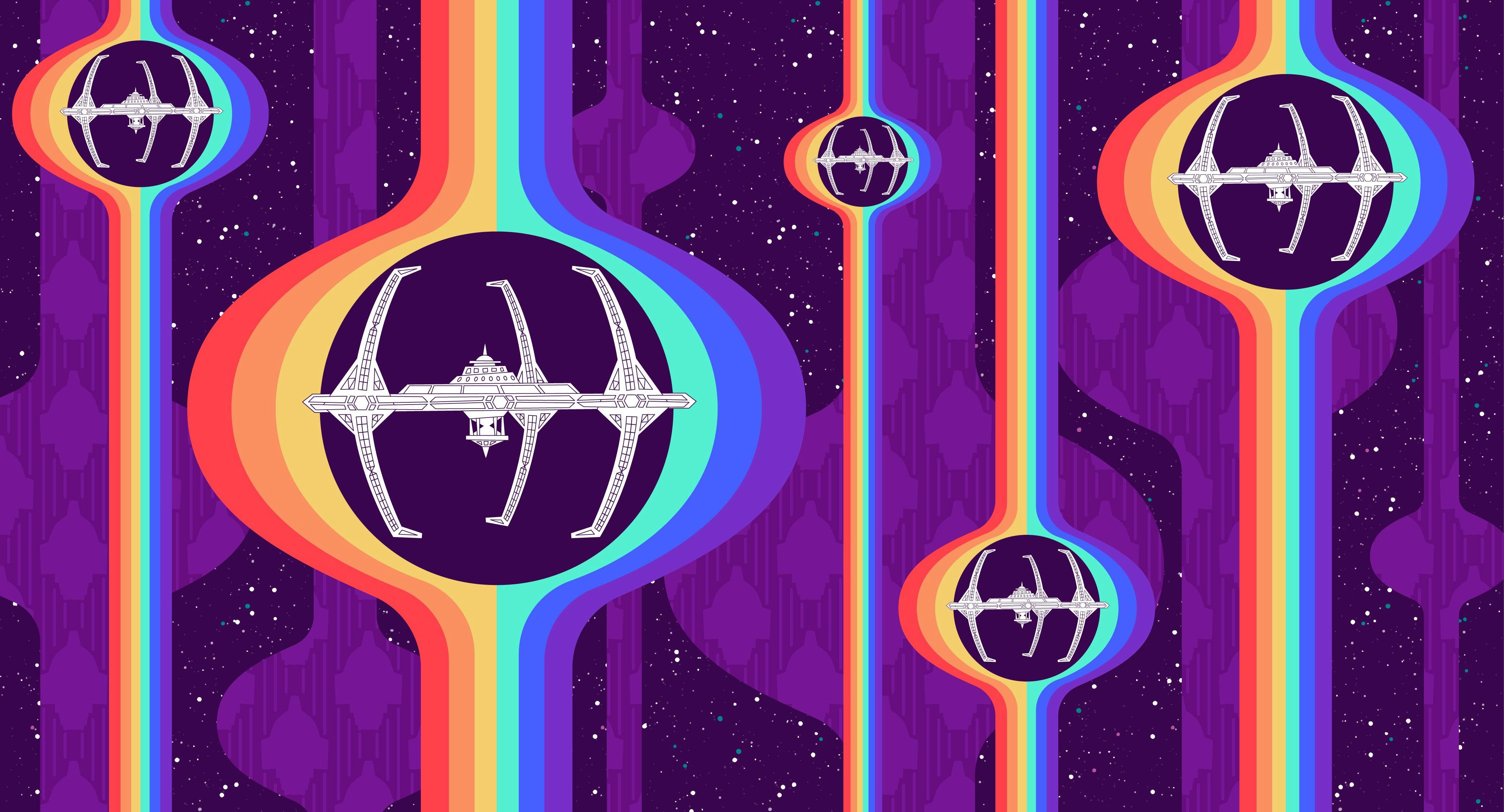
StarTrek.com
It took five decades for Star Trek to introduce a gay couple, with the reveal of Lt. Stamets and Dr. Culber’s relationship on the fifth episode of Star Trek: Discovery. The moment between the two — brushing their teeth at the end of a tough day — was a quiet one, in sharp contrast to the delighted audience response, particularly from LGBTQ+ viewers.
Star Trek: Discovery - Culber and Stamets Brush Their Teeth Together
The franchise has, at times, been criticized for its lack of sexuality and gender identity diversity. Even though it’s easy to suggest (as Patrick Stewart has, in relation to Picard’s baldness), in this utopian future, people just don’t care about such things. It’s also evident that, most of the time, 20th and 21st Century norms are still in place. Let’s not forget that the wise, caring Beverly Crusher is more at ease loving a creepy space ghost than she is with her Trill lover’s symbiont being transplanted into a female body in "The Host" (even as she admits her discomfort with the latter as a “limitation”).
But every so often, there are moments, storylines, or characters that point toward a slightly queerer future, even if this wasn’t intended by the writers at the time. I use queer here as a deliberately broad umbrella term — covering not just who you love, but how you perform your gender — to refer to deviation from the normal or default gender role or sexual identity. It’s often not as clear-cut as being gay or being transgender; queerness has many more shades of gray to it.
To close out Pride Month, it’s no surprise then that the series I’m combing through for queer moments — Star Trek: Deep Space Nine — has the most shades of gray of the 20th Century Trek shows. Alongside the politics, religion, and war, we witness the everyday lives of our characters — and the elements that fail to conform to our heteronormative expectations.
1. Queer Trills
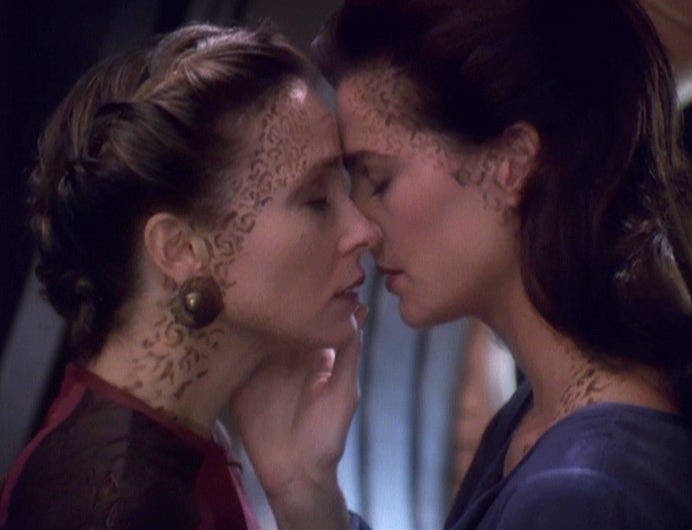
StarTrek.com
First off, we have the Trill, a joined species whose capacity to have lived as both a man and a woman means that although they are aware of gender roles, they’re also fairly blasé about deviating from them.
Jadzia Dax is both a science officer, a warrior, and a character whose past lives often feed into storylines. There is a real tenderness and fondness between Jadzia and the two former lovers of Curzon she meets over the course of the series. When Worf gets jealous over one, it feels entirely plausible (and not just because the character’s played by Vanessa Williams). It’s not his finest moment, but he’s not wrong in appreciating that his par’Mach’kai has the capacity to be attracted to women.
Additionally, Dax’s relationship with Lenara Kahn was both an echo of their past hosts’ relationships and their current hosts’ shared interests. The kiss between the two women (a rare thing on network television in 1995) was as passionate and chemistry-filled as any other meaningful kiss on the show.
2. The Very LGBTQ+ Friendly Mirror Universe
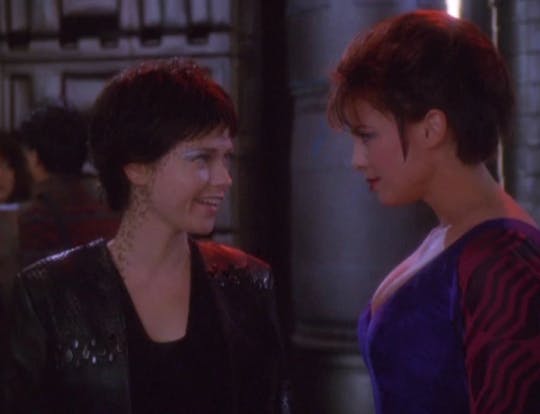
StarTrek.com
Although the Mirror Universe falls into the unfortunate stereotype category with Intendant Kira and her tendency to seduce almost everyone, male or female, there’s still a camp charm to the "anything goes" nature of this alternate reality. This is a world where sexuality is often opportunistic, but rarely completely straight. Even when Regent Worf tells Garak, “You are not my type,” in "Shattered Mirror," it’s an acknowledgement that attraction between men does exist, even if not in this case.
Ezri Tigan’s kiss with the Intendant in "The Emperor’s New Cloak" also offers up the second instance of two — women kissing for the show. While the tendency to use such moments as a gimmick for Sweeps Week, by 1999, was kicking off, it was still comparatively unusual for such kisses to occur in the context of an existing relationship. A semi-butch version of Leeta appearing at the end of the episode to “debrief” Ezri may be there mostly for laughs, at the expense of a bewildered Rom, but she’s also a potential new love interest (on the side of the virtuous rebels) for a character whose Sapphic tendencies could have so easily been coded as purely "bad."
3. Watching the Ferengi Balance Misogyny and Empowerment
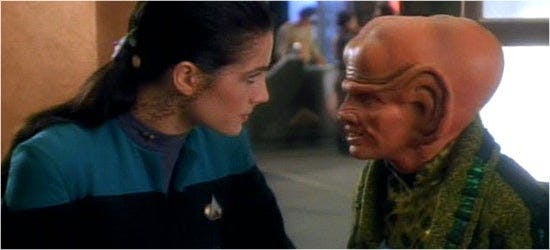
StarTrek.com
“What are these guys even doing on the list,” you might wonder. The Ferengi’s take on gender roles is a super-exaggerated version of our own, with their "feeeeee-males" forbidden to wear clothing or earn profit. While the Ferengi women we actually see on-screen resist and rebel at every turn, and “Females and finances don’t mix” is the most broken Rule of Acquisition we see, it’s still a wildly misogynist society — there’s no getting around this — but it manages to sidestep a great deal of the homophobia we might expect to accompany this.
On a trip to the Gamma Quadrant with young business associate Pel, Quark is unbothered by the idea of sharing a bed with someone he believes to be a man. Even after a tipsy kiss between the two, he’s more concerned with not losing a shrewd business partner — he’ll just pretend it never happened. Attraction between Ferengi men is not unknown, as indicated by Dax’s conversation with Pel about Quark earlier in the episode, and so in a delightful twist, the surprising thing is not that Pel “really loves” Quark, but that Pel is a woman!
4. Women Reign in STEM and Leadership
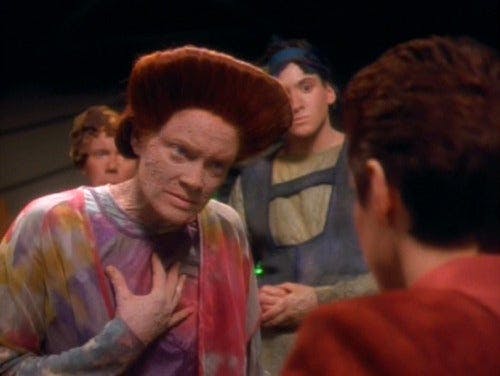
StarTrek.com
While Ferengi women are subservient to men, at least for much of the series, other species with two sexes adhere to different stereotypes and roles, inviting viewers to rethink our own assumptions. Having traveled through the wormhole in seek of sanctuary for a population displaced by the Dominion, the Skrreeans in "Sanctuary" note that their society is female-dominated, “Men are far too emotional to be leaders.” The Cardassians, too, are very clear on gender roles as, in "Destiny," O’Brien learns, “Men just don’t seem to have a head for this sort of thing. That’s why women dominate the sciences.”
5. Bashir and Garak's Ongoing Squabbles
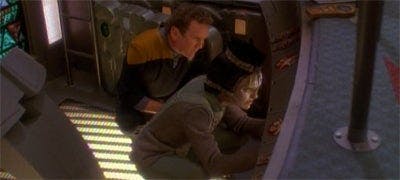
StarTrek.com
In the same episode, O’Brien also learns how Cardassians flirt. They bicker. They squabble. That’s how they “do things.” At this point in the series, Julian Bashir meets the Cardassian exile Garak regularly for lunch — where they bicker and squabble about literature, culture, and politics. While Bashir and Garak’s actors initially presumed there was a sexual element to this relationship, this proved not to be the case on-screen. Nevertheless, their complicated friendship is often as intense as any love story. Were these characters to appear on-screen today, the question of attraction, even if un-reciprocated, would certainly be discussed. Producer Ira Steven Behr even said himself, in the new documentary What We Left Behind, that were he doing the series again today, Garak, at the very least, would have been queer.
6. There's No "Right" Way to be a Man...
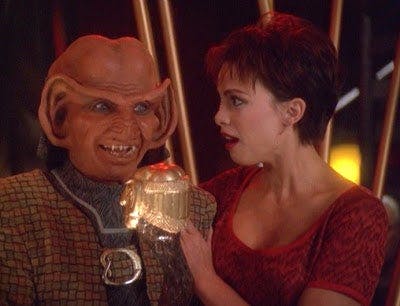
StarTrek.com
Ferengi males are all about profit; the very essence of a Ferengi is his greed. Yet, even Quark has his moments of kindness and generosity, which leads to his denunciation as a “hoo-manitarian!” (humanitarian) by Liquidator Brunt in "Body Parts." Grand Nagus Zek, the pinnacle of Ferengi society, takes first financial advice, and then social advice from his lover, Ishka (Quark’s mother). And Quark’s brother Rom, a single father often ridiculed not just by his sibling but by others on the station, slowly reveals his engineering skills, even though they’re not prized by his culture.
Each of these men deviate from what is expected of a Ferengi man. No one more so than Rom, who ends up standing up to his brother, in order to defend his son’s decision to join Starfleet. Rom declares that his son’s happiness means more to him than anything, even profit. As this good father turns away from profit and finds his own place in the world, he becomes exactly the kind of man ready to lead a newer, fairer Ferenginar. When he is crowned the new Grand Nagus in DS9’s penultimate episode, we’re cheering him on.
7. ...Or a Father
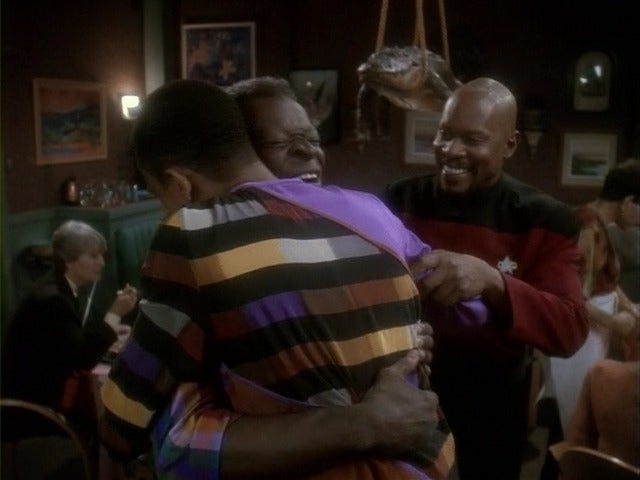
StarTrek.com
Rom isn’t the only single father on the station; Ben Sisko also raises his son alone. Worf’s failure to raise his son on his own still haunts him, despite their reconciliation. Miles O’Brien shares parenting duties with his wife, but is still very clearly a father who will do anything for his kids. For each of these fathers, their role involves more than being manly and brave (although sometimes that is necessary); it involves kindness, compassion, encouragement.
Ben Sisko is a fearless, determined captain and battle strategist, but he’s also the kind of father who will encourage his teenaged son to relate his nightmares, and express his love without embarrassment. Just as important, he’s portrayed as a loving son who often has a strong (but caring) word for his father Joseph, chef and avoider-of-medical-appointments extraordinaire.
Miles O’Brien is a gifted chief of operations who will nevertheless take his baby to work with him if it stops the crying for a few hours. A father’s love is why Gul Dukat saves Ziyal, and why her death breaks him. Damar’s loss as a father, in a world where vows are made “for my son, for all our sons,” helps him become the man he needs to be to lead the Cardassian rebellion. These relationships transcend 20th and 21st Century expectations of men — nothing less than sincere emotional engagement is to be accepted here.
Fatherhood is a vital, emotional, loving part of these men’s lives, so it is unsurprising when we learn that contraception is (finally!) a two-way street (as seen when Kasidy Yates becomes pregnant when “one of us forgot their injection last month”). It is also more fluid than we might imagine; on several occasions, we hear of Ensign (later Lieutenant) Vilix’Pran “budding.” And far less dramatic than Jadzia Dax and Lenara Kahn making out is the fact that Bashir and O’Brien are throwing Vilix’Pran a baby shower (outfits for the infants have been ordered from Garak!), which Sisko is excited to attend — perhaps the best indicator in the entire show that this is, in fact, a brave new world.
8. What Does Gender Even Mean to a Shapeshifter, Anyway?

StarTrek.com
Who cares about gender when everyone is goo? The Changelings — shapeshifters, Founders, or whatever you want to call them — are more concerned with reclaiming a lost soul than gender or sexual identity. Even though we may be uncomfortable with Changeling etiquette, their absolute disregard for gender or sexuality is a reminder that our normal is not necessarily a fixed thing. (Nevertheless, do avoid hooking up with a Changeling if possible!)
It would be wildly inaccurate to categorize Constable Odo as anything other than what he portrays himself as — a man. We must remember that this is a deliberate choice he has made, no doubt influenced by Dr. Mora, whose hairstyle he has also mimicked. Odo chooses to present himself in a certain way; therefore, it’s easy for us to categorize his linking with "the Female Changeling" as heterosexual, while his encounter with Laas (not least because the latter comes with an admonishment from Quark about a “Changeling Pride parade”) as homosexual. For Odo, though, there is no distinction; “This is just a form I borrowed,” he tells Kira in “Chimera.” “I could just as easily be someone or something else.” His take on sexual preference is not about male/female so much as it is about solid/Changeling, and his return to his people reflects that perfectly.
Claire Hennessy (she/her) is an Irish novelist, editor, book reviewer and creative writing facilitator. She tweets @chennessybooks.
